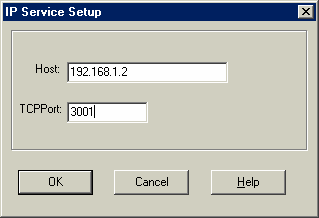
DL4500-EDH+/EDH-485 Hardware Quick Start
PDF Download
The DL4500-EDH+/EDH-485 (now referred to as DL4500) hardware platform was
designed to be a gateway, which interfaces your Ethernet TCP/IP to A-B’s Data Highway
Plus (DH+) or DH-485 network. It comes in a DC powered Din-Rail Mountable compact
cabinet for ease of portability and installation. The DL4500 combines the Lantronix
Ethernet Microprocessor with our proven A-B DH+ or DH-485 interface. This allows for
one to four sockets (connections) to be running simultaneously to one DH+ or DH-485
network
This quick start is to help you get started with your DL4500, for more in-depth configuration please refer to the DL4500 User Manual.
This quick start is to help you get started with your DL4500, for more in-depth configuration please refer to the DL4500 User Manual.
Install the Lantronix software (DeviceInstaller and Redirector)
1. Insert the Equustek installation product CD into your CD-ROM drive.
Select DL4500 Software from the menu
Select Install Lantronix DeviceInstaller from the menu
Select Install Lantronix Redirector Software from the menu
Select Install Lantronix DeviceInstaller from the menu
Select Install Lantronix Redirector Software from the menu
2. If Menu fails to Load
Click the Start button on the Task Bar and select Run.
Click the Start button on the Task Bar and select Run.
o (E.g., E:\cd-start.exe)
Click the Start button on the Task Bar and select Run.
o (E.g., E:\cd-start.exe)
3. To Download from the web
DeviceInstaller - (ftp://ftp.lantronix.com/pub/DeviceInstaller/)
Redirector - ftp://ftp.lantronix.com/pub/ inside the redirector folder
Note: A reboot of your PC will be required at this time.
Redirector - ftp://ftp.lantronix.com/pub/ inside the redirector folder
Note: A reboot of your PC will be required at this time.
Equustek Solutions, Inc.
Suite 815 – 1200 W 73rd Ave.
Vancouver, BC, Canada – V6P 6G5
Toll Free: 888-387-3787
Tel: (604) 266-8547 Fax (604) 266-9547
Web-site: www.equustek.com
Suite 815 – 1200 W 73rd Ave.
Vancouver, BC, Canada – V6P 6G5
Toll Free: 888-387-3787
Tel: (604) 266-8547 Fax (604) 266-9547
Web-site: www.equustek.com
Next is to set the IP address on the internal Lantronix Ethernet Microprocessor.
Assign IP Address and Network Class
Click the Start button on the Task Bar and select All Programs\Lantronix\
DeviceInstaller\DeviceInstaller. The Device Installer window displays.
DeviceInstaller\DeviceInstaller. The Device Installer window displays.
 DeviceInstaller Window
DeviceInstaller Window
1. Click the IP icon.  The Assign IP Address window displays.
The Assign IP Address window displays.
 Assign IP Address Window
Assign IP Address Window2. In the Enter the Hardware or Ethernet Address field, enter the Ethernet
Address (MAC address), which is listed on the label on the bottom of the unit.
3. In the Enter IP Address to assign field, enter the unit’s IP address in
XXX.XXX.XXX.XXX format.
4. In the PC Network Class section, select the class (subnet mask).
(Most users select Class C).
5. Click the Set IP Address button.
6. Confirm that the “Successful” message displays and click OK.
7. Click the Back button to return to the DeviceInstaller window.
 DeviceInstaller Window
DeviceInstaller WindowTest the IP Address
1. Click the Ping  icon. The Ping Device window displays. Enter the IP
Address and click the Ping icon.
icon. The Ping Device window displays. Enter the IP
Address and click the Ping icon.
 Ping Device Window
Ping Device Window2. Confirm that “Reply received” messages display in the window, indicating
that the IP address has been entered successfully.
Note: If you do not receive “Reply received” messages, make sure the unit is properly
attached to the network and that the IP address assigned is valid for the particular
Network segment you are working with. If you are not sure, check with your systems
Administrator.
3. Click the Back button to return to the Device Installer window.
Redirect the IP address via a Virtual COM Port
The Redirector maps the IP address and Port number configured in the DL4500-
EDH+ to a virtual COM port. The virtual COM port can then be used to send the
Serial DF1 driver supplied by your software or MMI package (RSLINX,
Kepware, Citect, etc) to tunnel the DF1 protocol to the DL4500-EDH+ where it
will be interpreted and sent to the corresponding DH+ node.
1. To access the redirector software click Start/Programs/Lantronix
Redirector/Configuration

2. The next step is to select a COM port to redirect from. You will see a similar
window as shown below. Select the “Com Setup” button inorder to configure
a COM port.
 Redirector Window
Redirector Window3.
Start with COM5 or higher to avoid the old legacy ports of COM1 to COM4.
You should also check which COM ports your application supports; some
only support from COM1 to COM8. In this example I have selected COM5 to
be redirected. COM1, COM2, are greyed out - this indicates that they
physically exist as hardware already. This is another good reason to avoid
using COM1 to COM4 for redirecting - it avoids future conflicts if you add
another serial port or two.
 COM Port selection Window
COM Port selection Window4. After you have selected the COM port you wish to use, press the OK button.
5. You will now need to assign the IP address and the Port ID to the COM port.
6. Press the Add IP button to configure the CoBox's details.
 Add IP Window
Add IP WindowFor example, COM5 is set to redirect to a CoBox with IP address 192.168.1.2 and a TCP Port of 3001. If you have more questions please press the Help button.
7. Click OK button
8. Click Save Button
9. Reboot system